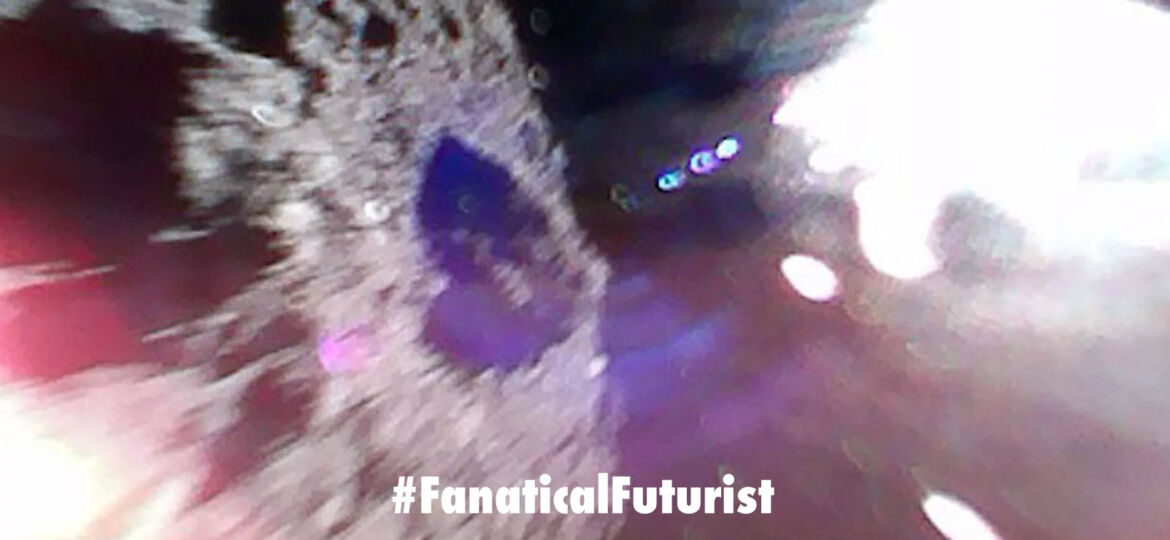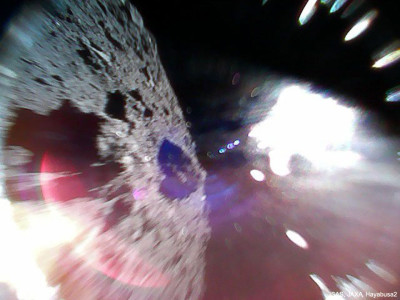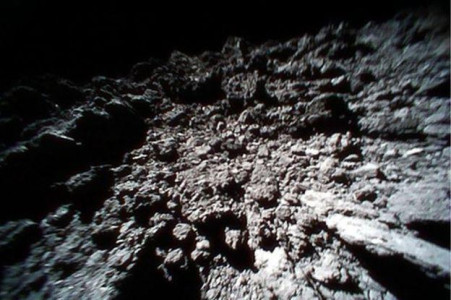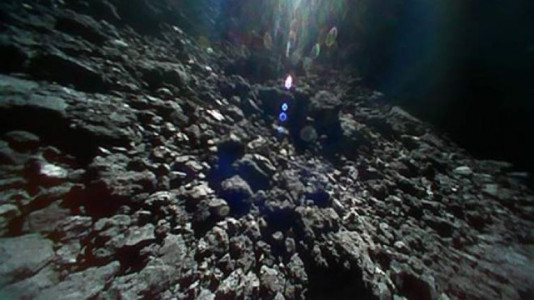
WHY THIS MATTERS IN BRIEF
In galactic terms Earth’s neighbourhood is huge, and we’re only just beginning to explore it.
First Japan wants to be the world’s first country to drill a hole through the Earth’s mantle, and build the world’s first space elevator, and now the Japan Aerospace Exploration Agency, JAXA, has made history by successfully landing two robotic explorers on the surface of an asteroid. The two small rovers, which were despatched from the Hayabusa-2 spacecraft will now move around the 1km wide space rock known as Ryugu, and the asteroid’s low gravity means they can hop across it, capturing temperatures and images of its surface as they go.
“Both rovers are in good condition,” the agency confirmed on Saturday.
The other day JAXA tweeted pictures from the two rovers, which were transmitted via Hayabusa-2, the spaceship that reached Ryugu, which is a staggering 280 million miles away, in June this year after a three and a half year journey. While the European Space Agency (ESA) had previously managed to land on an icy comet, this is the first time a spacecraft has placed robot rovers on the surface of an asteroid.
Asteroids are essentially leftover building materials from the formation of the solar system 4.6 billion years ago and Ryugu is a particularly primitive variety which is why many scientists believe that studying it could shed light on the origin and evolution of Earth itself.
The rovers adventure began early last Thursday Hayabusa-2 began descending towards the surface of Ryugu, preparing to eject its rovers with the little hoppers stored in a drum shaped container at the base of the “mothership.” Collectively, the hoppers form a 3.3kg science package known as Minerva II, and on Friday, about 60m (196ft) from the asteroid, the two robots were released.
Space agency officials explained that when the front of the drum was jettisoned into space the two rovers would be ejected from the container and fall independently to the asteroid’s surface. One of the principal concerns for deployment was Ryugu’s rougher than expected surface, which is carpeted with boulders and has very few smooth patches.
The 1kg rovers are equipped with wide angle and stereo cameras to send back pictures, and spine like projections from the edges of the hoppers are sensors that will measure surface temperatures on the asteroid. They can hop and float around thanks to motor powered internal rotors which propel them across the asteroid.
The diamond shaped asteroid has a blackish coloured surface, and rotates on its axis around once every 7.5 hours, and on 3rd October, the mothership will deploy a lander called Mascot, developed by the German Aerospace Center (DLR) and the French Space Agency (CNES).
Then later in October Hayabusa-2 itself will descend to the surface of Ryugu to collect a sample of rock and soil, and then further on in the mission JAXA plans on detonating a small explosive charge that it hopes will punch a crater into the surface of Ryugu.
Hayabusa-2 would then descend into the crater to collect fresh rocks that have not been altered by eons of exposure to the environment of space which will then be sent back to Earth for analysis.
The spacecraft will leave Ryugu in December 2019 with the intention of returning to Earth with the asteroid samples in 2020.






















